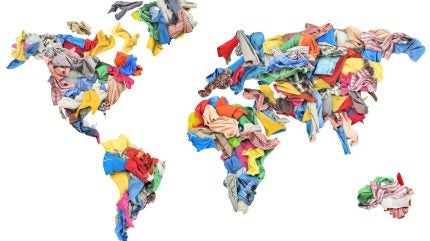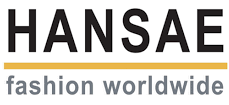
Globalisation has led to increased opportunities for apparel manufacturers to diversify their customer base and reduce reliance on a single market. Having an international presence can help manufacturers improve resilience and mitigate risks associated with economic recessions, currency imbalances, and supply chain disruptions.
However, while globalisation may have increased diversification, it has also brought unforeseen consequences, including environmental harm and lax labour standards.
The industry also faces intense competition and cost and pricing pressure. Trade liberalisation, the movement of product sourcing to lower-cost countries, and the ongoing emergence of new competitors have all contributed to pricing pressure and uncertainty throughout the supply chain. Geopolitics and tariff issues have seen fashion companies turn to Asian suppliers, such as Vietnam, Bangladesh, Cambodia, and Indonesia, as alternatives to China, and in the last couple of years, countries such as the US have made a push towards near-shoring and use of ‘partner’ countries for their supply chain.
But expanding into international markets can also lead to growth opportunities and increased market share. Furthermore, an international workforce can help forge partnerships with buyers and increase brand awareness.
An international presence is good for business
Hansae is a South Korean-based garment manufacturer whose clients include Target, Walmart, Gap, Kohl’s, Alo Yoga, Aritzia, and Dick’s Sporting Goods. Through its offices around the world Hansae has a global presence and values the input of its international base and employees.
Alisa Mulhair is Vice President for Sales and Strategy for Hansae – Target, based in Minneapolis in the US. Mulhair tells us that Hansae’s international position and scale provides not only global production solutions, but its balanced portfolio of retailers and brands across US, Europe, and Asia provides awareness of trends world-wide.
“Having leaders located in countries and close to markets that Hansae produces for, provides capability by having a better understanding of the market and the retailer/brands we work with,” Mulhair says. “When we understand and relate well, we can better support and deliver for our customers.”
Mulhair adds that experience is vital for effective communication: “My current focus is with Target, relating to their brand positioning, how they communicate, and their processes, which all provide advantages to strategically partnering with them.
“Additionally, at Hansae we can leverage our international partners, such as Barcelona, to gain insight on trends and tactics European retailers are employing that may be beneficial for our US retailers too.”
This is also true when it comes to design and new innovations. Paul Passavant is Hansae’s Design Team Manager at the company’s New York office and has been with Hansae for almost 13 years.
“What sets Hansae apart from other vendors is the innovation and technology that we implement in our design process,” Passavant says. “Another speciality is our constant ability to adapt in the global market, remaining agile to rapid changes and challenges.”
Hansae’s international presence led to Passavant spending time in South Korea: “I had the chance of living in Seoul for a year and a half working in the Hansae R&D headquarters. That hand-in-hand experience with Hansae’s global design teams is something that I will never forget. Teams that are positioned globally each bring a unique, specific, well -crafted skill to the table. [They] are what makes up the vital organs of such an enormous operation.”
Having seen the company through the eyes of a customer, Collette Welch was impressed, and joined Hansae as Vice President, Sales – Walmart, in March 2024. “I’ve only been here a month, but from being a customer of Hansae in the past, I was always able to count on the company to deliver on time, in full and at the best price possible,” says Welch, who believes that it is crucial for Hansae to have internationally based employees.
“It is important for the customer in the international locations to have a contact that speaks their language, understands their customer base, and reacts to customer requests on the same time schedule,” Welch explains. “Customers have a point of contact in their time zone that can quickly react to their customer needs. By having a presence in the country, we are able to spend more time in the customers’ stores to better understand their overall strategy and the competition, building relationships with other retailers and buyers.
“The local team becomes the expert of their account, as well as a trusted source and advocate for the customer. As a liaison between the customer and the overseas office, the goal is to make it easier for the customer to do business with Hansae.”
Strategic partnerships are key to future plans
Welch says that what makes Hansae special is its speed to market, diverse COO production and market intelligence for its vast customer base.
“Overall, the goal is to grow sales, for Hansae and for our customers,” Welch continues. “We will succeed when we help our customers succeed. I would like to ensure that our talent is aligned to react quickly to the needs of our customers, allowing us to offer best in class customer service, combined with best quality and price.”
Mulhair says that deepening strategic partnerships is key for the company’s future: “My focus today is understanding how Hansae can become even more relevant for Target. [Our plans] for the future are to continue to expand in the brands we currently produce and explore where capabilities are being under-leveraged, as well as additional growth opportunities.”
Passavant is keen to ensure design plays a pivotal role moving forward. “Continuing the growth of Hansae’s New York Design Team is currently underway,” he says. “We are excited to nurture and advance the relationships that our teams have with our customers around the world.”
For Hansae, its global reach and international workforce has become an essential element to its success. Partnerships with over 30 buyers and retailers in the US has helped the manufacturer export around 400 million pieces per year, and the company has ten high-end apparel manufacturing factories in Central America, Guatemala, Nicaragua, and Haiti.
After recently celebrating its 40th anniversary, Hansae can look forward to leveraging its international workforce to expand its global reach.
Passavant concludes: “It’s a necessity to have feet on the ground and representation with the areas of where your business takes place. Understanding your customer and their needs is essential. With speed being such a demand, our teams partner with one another, to bring our customers the fastest, most competitive response.”
Download the free whitepaper below to learn more about how Hansae plans to make substantial gains in sustainable fashion in 2024.


